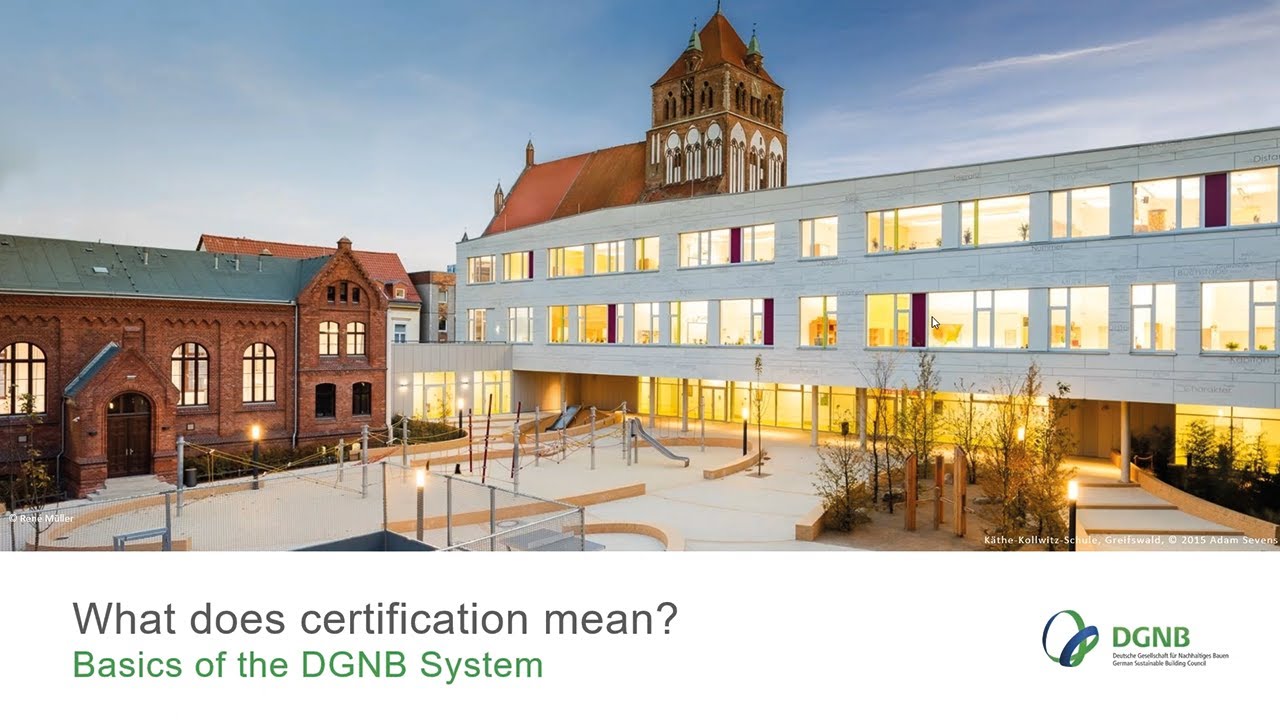The DGNB Certification System is a second-generation system compared to other international certification systems: Assessment revolves not only around ecological aspects but also includes a holistic examination of the entire life cycle of a building or district.
Economically interesting: Sustainable buildings are more valuable while having lower operating and maintenance costs. Studies show that sustainable buildings minimise the risk of vacancy and increase rental income. This in turn leads to a better market and higher resale value of the property. Sustainable construction is therefore a value driver, not a cost driver. This is also shown by a study from Denmark (2020): more sustainable does not mean more expensive. On the contrary. Some of the buildings in the study with the highest DGNB ratings or the lowest CO2 footprints are also among those with the lowest construction costs. Read more about the study here.
Higher quality of life. Lower ancillary costs.
- Healthy users: The DGNB System takes the health and well-being of building users into account and helps to reduce illness.
- Lower costs for users: The DGNB System focuses on the building’s overall life cycle from the outset, lowers costs and optimises processes in operation. Sustainable planning can thereby reduce ancillary costs in the long term.
- For future generations: DGNB certified buildings consume fewer resources during construction, have lower greenhouse gas emissions and largely can be recycled. In thus reducing waste, they make an active contribution to protecting the environment.
Higher value. Lower risks.
- Quality from the outset: As from the early planning stage, the DGNB Pre-Certificate reassures building owners and users that the building will achieve its ultimate performance targets.
- Equal consideration for economic aspects: The economic sustainability of a building is seen as being every bit as relevant as its environmental and sociocultural performance.
- Increased market opportunities: The DGNB Certificate increases a building’s sale and rental potential by providing owners and users with a clear indication of its superior quality.
- Safeguarding further rentals: The ever-growing demand for certified buildings minimises the risk of vacancies.
- Simplifying funding: Properties likely to qualify for DGNB Certification often secure loans more quickly and at better conditions.
- International comparability: DGNB certified buildings are comparable at both national and international levels.
- Precise assessment: Individual profiles based on the standardised DGNB System are available for different building types to provide the most suitable certification for the market in question.
More efficient planning. Less time and effort.
- Promoting integrated planning: DGNB Pre-Certification in particular supports integrated planning, providing early optimisation potential for construction, management, conversion and dismantling with an emphasis on optimising costs. This means that the focus of the project is on quality from the very beginning.
- Targeted planning and monitoring: A systematic definition of sustainability targets based on DGNB Criteria raises all stakeholders’ awareness at an early stage and serves as a central instrument for quality assurance during the construction phase.
- Assessing overall performance: Rather than specifying individual measures, the DGNB System sets targets for measuring a building’s overall performance. In doing so, it actively promotes innovative building concepts.
Relevance of products used in construction. Clear guidance.
Clear innovation potential: For each of the relevant criteria, the DGNB System shows consultants and manufacturers the extent to which building products influence the sustainability of the project as a whole. In this way, products can be further developed and optimised from a sustainability perspective. Here, too, the focus is on the entire life cycle – and therefore on the long-term quality of products used in construction.
DGNB Criteria should be incorporated in the planning phase as early as possible. Pre-Certification allows a development to be optimised from a sustainability perspective from the very beginning as well as generating an official record of this process.
This approach offers a number of benefits with respect to planning, construction and marketing. By defining all key sustainability criteria early on, clear targets are established for each player in the planning team. This in turn increases transparency, improves risk management and ensures a secure basis for the planned performance targets – and for funding. And, of course, the recognized quality label increases the attractiveness of properties, thus improving their rental and sales prospects. This means greater financial security for building owners and investors from an early stage in the process.
Explained briefly and compactly: What does certification mean?
What are the benefits of certification and how does the process work? The lecture explains how new buildings, existing buildings, interiors or districts can be optimised with the help of the DGNB. The distribution of roles, costs and awards are also discussed.
A beginner's seminar with everything you need to know for more sustainability in the building sector.
Your contacts

Angelika Bandke
Senior Consultant Serial Certification
- Phone: +49-711-722322-44
- Email: a.bandke@dgnb.de


